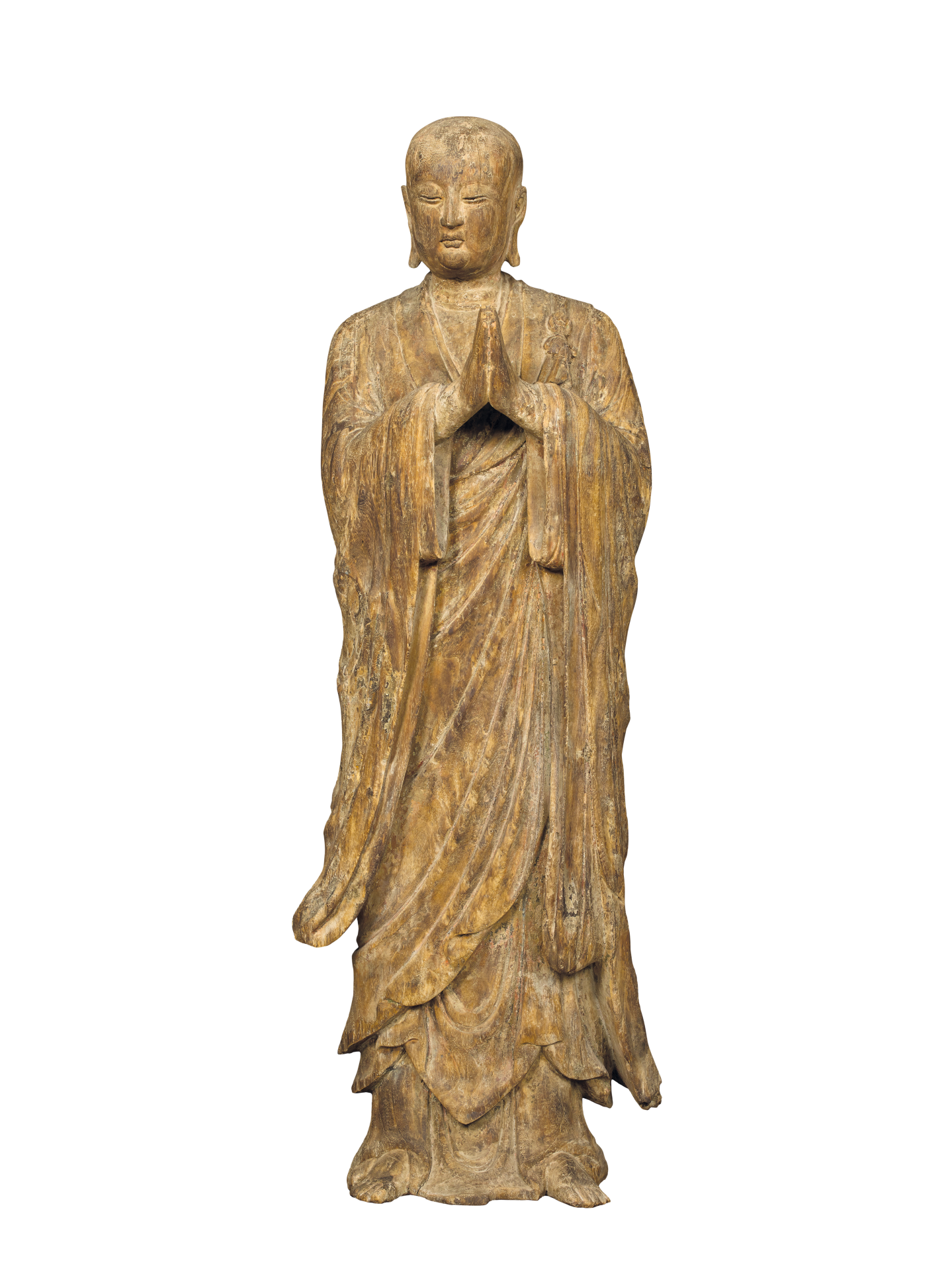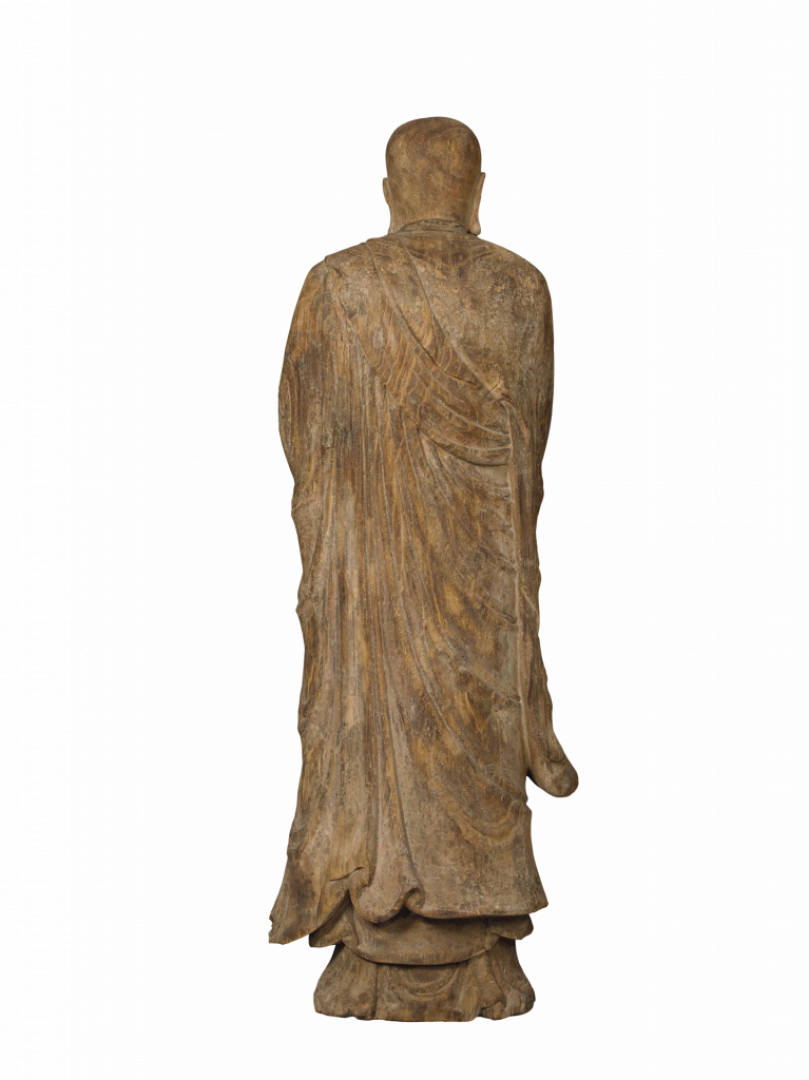Standing Ānanda
Ānanda, one of the 10 principal disciples of Śākyamuni, was known as The One Who Heard Most. After attaining Buddhahood, Śākyamuni returned to his hometown, Kapilavastu, to convert his relatives. Ānanda was among them. He joined the monastic community since childhood. Impressed by his supreme memory, great compassion and gentleness, Śākyamuni appointed Ānanda as the head of his attendants at the Bamboo Grove Monastery (Veṇuvana Vihāra). Ānanda held this post until Śākyamuni entered parinirvāṇa. At the First Council convened in Rājagṛha shorty after the Buddha passed away, Ānanda with his great knowledge and perfect memory, recited with accuracy many of the discourses delivered by the Buddha. After the lines were confirmed by Mahākāśyapa and other senior monks, they were compiled into the Buddhist canon. The words “Thus have I heard…” preceding the content of the sutras are in fact the words used by Ānanda to introduce what he had heard from the Buddha.
This Ānanda statue has a serene and dignified countenance, delicate facial features, plump cheeks, full lips and a solid upright physique. He is standing barefooted with palms joined in front of his chest. The slightly leftward sway of the body and rightward turn of the head suggests that the statue was part of a grouping.
A close examination will reveal traces of dark brown lacquer on the surface, indicating that the statue was originally coated with lacquer. Although the carving is on the whole fluidly executed and the inflection points meticulously rendered, the treatment of some minor areas such as the hands and the ring anchoring the kāṣāya on the left shoulder is quite crude. The draping end of each sleeve is purposely made to flow at a different angle to suggest a breezy atmosphere in an attempt to add vividness and realism to the entire image.

